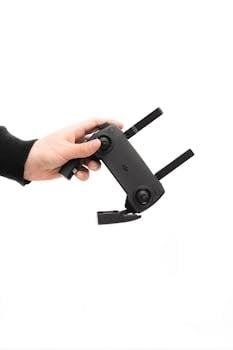Autolink AL319 User Manual⁚ A Comprehensive Guide
Welcome to the comprehensive guide for the Autel AutoLink AL319! This manual provides instructions, safety information, and troubleshooting tips. Use the AL319 to verify repairs, check State Emission Monitor Status, and solve driveability problems. This guide has all you need!
The Autel AutoLink AL319 is a user-friendly OBDII code reader designed to empower vehicle owners and technicians with essential diagnostic capabilities. This tool enables users to efficiently identify and address basic engine and driveability issues, making it an invaluable asset for maintaining vehicle health. Featuring a patented One-Click I/M Readiness Key, the AL319 simplifies the process of checking emissions readiness, ensuring compliance with state regulations.
The AL319 boasts a vibrant TFT color display and a built-in speaker, providing clear visual and audible feedback during diagnostic procedures. Its compatibility with all OBDII protocol cars manufactured since 1996 further enhances its versatility, making it suitable for a wide range of vehicles. The device allows users to read and clear diagnostic trouble codes (DTCs), verify repairs, perform road tests, and monitor vehicle performance with ease.
Whether you’re a seasoned mechanic or a first-time car owner, the Autel AutoLink AL319 offers a convenient and affordable solution for diagnosing and resolving common automotive issues. Its intuitive interface and comprehensive features make it an indispensable tool for anyone seeking to maintain their vehicle’s optimal performance.
Key Features and Benefits of the AL319
The Autel AutoLink AL319 offers a range of features and benefits that make it a valuable tool for vehicle diagnostics. Its unique One-Click I/M Readiness Key allows for quick state emission checks, ensuring vehicles meet regulatory standards. The AL319’s TFT color display provides clear and easy-to-read diagnostic information, while the built-in speaker delivers audible tones for added convenience.
This OBDII code reader supports all OBDII protocols, making it compatible with most cars manufactured after 1996. It enables users to read and clear diagnostic trouble codes (DTCs), helping to identify and resolve engine issues. The AL319 also allows for verifying repairs through road tests and monitoring State Emission Monitor Status, ensuring proper vehicle functionality.
With its user-friendly interface, the AutoLink AL319 empowers both experienced mechanics and everyday car owners to diagnose and fix common automotive problems. Its affordability and comprehensive features make it an essential tool for maintaining vehicle health and preventing costly repairs. The AL319’s ability to solve basic engine and driveability issues further enhances its value, providing users with a cost-effective solution for vehicle maintenance.
Safety Precautions and Warnings
To prevent personal injury or damage to vehicles and the AutoLink AL319 scan tool, carefully read and adhere to the following safety precautions. Always perform automotive testing in a safe environment. Ensure adequate ventilation when working around a vehicle’s engine to avoid inhaling harmful fumes. Wear safety glasses to protect your eyes from debris and fluids.
Keep the scan tool away from water, fuel, and grease to prevent damage. Store the AL319 in a dry, clean place when not in use. Before connecting the scan tool, make sure the vehicle’s ignition is turned off to avoid electrical surges. Do not use the AL319 in explosive environments.
Never disconnect the scan tool while the engine is running or while data is being transmitted. Incorrectly clearing diagnostic trouble codes (DTCs) can cause other systems to malfunction. Always consult a qualified technician for assistance. Do not rely solely on the AL319 for critical safety decisions. Regularly check the tool for any signs of damage. Following these precautions ensures safe and effective use of the AutoLink AL319.
Getting Started⁚ Initial Setup and Updates
To begin using your Autel AutoLink AL319, you will need to perform an initial setup and update the device to ensure you have the latest features and bug fixes. First, unpack the AL319 and verify that all components are included, such as the main unit, OBDII cable, USB cable, user manual, and CD with software.
Next, connect the AL319 to your computer using the provided USB cable. Install the update software from the included CD or download it from the Autel website. Launch the software and follow the on-screen instructions to register your device. Registration typically requires creating an account and entering the serial number located on the back of the AL319.
Once registered, the software will check for available updates. Download and install any updates to ensure optimal performance. The update process may take a few minutes, so ensure your computer remains connected to the internet and the AL319 stays connected to your computer. After updating, disconnect the AL319 from your computer. Your device is now ready for use.
Connecting the AL319 to Your Vehicle
Connecting the Autel AutoLink AL319 to your vehicle is a straightforward process. First, locate the OBDII port in your vehicle. This port is typically found under the dashboard on the driver’s side. Refer to your vehicle’s manual if you have difficulty locating it.
Ensure your vehicle’s ignition is turned off before connecting the AL319. Plug the OBDII connector on the AL319 securely into the OBDII port in your vehicle. Once connected, turn the vehicle’s ignition to the “key on, engine off” position.

The AL319 will power on automatically once it detects a connection to the vehicle’s OBDII port. The device will then begin to communicate with your vehicle’s computer system. Follow the prompts on the AL319 screen to initiate the diagnostic process. If the AL319 does not power on, ensure the OBDII connector is fully seated in the port and that your vehicle’s ignition is in the correct position. If problems persist, consult the troubleshooting section of this manual or contact Autel support for assistance. Always perform automotive testing in a safe environment.
Understanding the Display and Interface
The Autel AutoLink AL319 features a user-friendly display and interface designed for easy navigation. The TFT color display presents information clearly, including diagnostic trouble codes (DTCs), I/M readiness status, and vehicle information. The interface consists of several buttons that allow you to navigate menus and select options.
The “Read Codes” button allows you to retrieve stored and pending DTCs from the vehicle’s computer. The “Erase Codes” button clears DTCs after repairs have been made. Use the “I/M Readiness” button to check the status of emission monitors. The navigation buttons (up, down, left, right) help you move through menus and highlight different options.
The “Enter” button confirms your selections. The “Escape” button returns you to the previous menu. The display also shows real-time data, such as engine RPM, vehicle speed, and sensor readings. Understanding the display and interface ensures you can effectively use the AL319 to diagnose and troubleshoot vehicle issues. The bright color display and intuitive button layout make it accessible for both beginners and experienced users.
Reading and Interpreting Diagnostic Trouble Codes (DTCs)
Reading and interpreting Diagnostic Trouble Codes (DTCs) is a crucial aspect of using the Autel AutoLink AL319. When the scan tool detects an issue, it displays a DTC, which is a five-character code. The first character indicates the system (e.g., P for Powertrain, B for Body, C for Chassis, U for Network). The second character specifies whether the code is generic (0) or manufacturer-specific (1).
The third character indicates the subsystem (e.g., fuel system, ignition system). The last two characters provide a specific fault code. For example, P0300 indicates a random or multiple cylinder misfire. Use the AL319 to retrieve both stored (confirmed) and pending DTCs.
Stored DTCs represent issues currently affecting the vehicle, while pending DTCs indicate intermittent problems. Refer to the vehicle’s service manual or online databases to understand the meaning of each DTC. Interpreting DTCs accurately allows you to identify the root cause of the problem and perform the necessary repairs. After resolving the issue, clear the DTCs using the AL319 to turn off the check engine light.

Using the One-Click I/M Readiness Key
The Autel AutoLink AL319 features a unique patented One-Click I/M Readiness Key, designed for quick and easy assessment of your vehicle’s emission readiness. This key simplifies the process of checking whether your vehicle is ready for state emission testing, saving you time and potential headaches. To use the One-Click I/M Readiness Key, simply connect the AL319 to your vehicle’s OBD II port and press the I/M Readiness Key. The tool will then perform a scan of the emission systems.
The AL319 will display the results using color-coded LEDs. Green indicates that the system is ready, yellow indicates that the system is not ready, and red indicates that a problem has been detected. Additionally, the tool provides an audible tone to alert you to the status of each system. The I/M Readiness Key checks various emission-related monitors, such as the catalyst monitor, oxygen sensor monitor, and evaporative system monitor. Ensure all monitors are ready before taking your vehicle for an emission test.
Clearing Diagnostic Trouble Codes (DTCs)
The Autel AutoLink AL319 allows you to clear Diagnostic Trouble Codes (DTCs) after addressing the underlying issues. Clearing DTCs is a crucial step in the repair process. To clear DTCs, first, ensure that the AL319 is connected to your vehicle’s OBD II port and that the ignition is turned on. Navigate to the “Erase Codes” or “Clear DTCs” option in the main menu of the AL319. A warning message will appear, advising you to proceed with caution, read it carefully. Confirm your intention to clear the codes.
The AL319 will then communicate with your vehicle’s computer to erase the stored DTCs. After the codes are cleared, it’s essential to perform a road test to verify that the issue has been resolved and the codes do not reappear. Clearing DTCs can also reset the vehicle’s emission monitors, so allow time for the monitors to complete their cycles before an emission test. Clearing codes without fixing the underlying issue can lead to recurring problems.
Performing Road Tests and Verifying Repairs
After addressing the diagnosed issues and clearing Diagnostic Trouble Codes (DTCs) with your Autel AutoLink AL319, performing road tests is essential to verify the effectiveness of the repairs. Road tests simulate real-world driving conditions, allowing you to confirm that the problem has been resolved and that no new issues arise. Start by driving the vehicle under various conditions. Monitor the vehicle’s performance, paying attention to any unusual noises, vibrations, or changes in behavior. Use the AL319 to monitor live data parameters, such as engine temperature, fuel trims, and sensor readings.
If DTCs reappear during the road test, it indicates that the repair was not fully effective or that there are additional underlying problems. Reconnect the AL319 to read the new DTCs and diagnose the remaining issues. Successful road tests should confirm that the vehicle operates smoothly under diverse conditions and that all emission monitors are set to “ready.” Properly performed road tests ensure the long-term reliability of the vehicle. Document all test conditions.
Checking State Emission Monitor Status
The Autel AutoLink AL319 allows you to check the status of your vehicle’s emission monitors, ensuring compliance with state regulations. Emission monitors are internal diagnostic tests that the vehicle’s computer runs to verify the functionality of emission control systems. Before a state emission test, it’s crucial to confirm that all monitors are set to “ready.” Incomplete or “not ready” monitors will result in a failed inspection. To check the emission monitor status, connect the AL319 to your vehicle’s OBDII port, navigate to the I/M Readiness function, and select “Check Monitor Status.”
The AL319 will display a list of emission monitors, indicating whether each is “ready” or “not ready.” Common monitors include catalyst, oxygen sensor, evaporative system, and secondary air system. If any monitors are “not ready,” you’ll need to perform a drive cycle. The AL319 helps eliminate guesswork with color-coded LEDs. Drive cycles involve specific driving patterns designed to allow the vehicle to run the necessary diagnostic tests. Consult your vehicle’s service manual.
Troubleshooting Common Issues
Encountering issues with your Autel AutoLink AL319 is frustrating, so this section addresses common problems and their solutions. If the AL319 fails to power on, first ensure the vehicle’s ignition is turned on, and the scanner is securely connected to the OBDII port. A loose connection is a frequent culprit. If the device still doesn’t power on, check the vehicle’s OBDII port fuse, as a blown fuse can prevent the scanner from receiving power. For connection errors, verify compatibility with your vehicle; The AL319 supports all OBDII protocol cars since 1996.

If you face issues updating the scanner, ensure a stable internet connection and that the USB cable is properly connected to both the AL319 and your computer. Download the latest update software from the Autel website. If the AL319 displays incorrect or no data, clear any existing DTCs and perform a short test drive to reset the system. Contact Autel’s customer support for assistance.

Maintenance and Storage of the AL319
Proper maintenance and storage are crucial for prolonging the life of your Autel AutoLink AL319. To clean the AL319, use a soft, dry cloth. Avoid using solvents or harsh chemicals, as they can damage the device’s exterior and internal components. Never submerge the scanner in water or any other liquid. Inspect the OBDII connector regularly for dirt or damage. If necessary, gently clean the connector pins with a small brush.
When not in use, store the AutoLink AL319 in a clean, dry place. Avoid extreme temperatures and direct sunlight, which can harm the LCD screen and internal electronics. Store the device in its original packaging or a protective case to prevent physical damage. Keep the AL319 away from children and pets. Regularly check the USB cable for wear and tear, and replace it if damaged. Periodic software updates also help maintain optimal performance and prevent software-related issues.